"Sql Server' Extract Logins From Restored Master Database
Azure SQL Database Backup and Restore
25 Feb 2021 47115 views 0 minutes to read Contributors ![]()
![]()
Backup for Azure SQL Database
Database backups are an essential office of any business continuity and disaster recovery strategy, because they protect your data from corruption or deletion. These backups enable database restore to a point in time inside the configured retention period.
In both SQL Database and SQL Managed Instance use SQL Server technology to create full backups every week, differential backups every 12-24 hours, and transaction log backups every five to ten minutes. The frequency of transaction log backups is based on the compute size and the amount of database activity.
The showtime full backup is scheduled immediately subsequently a new database is created or restored. This backup commonly completes within xxx minutes, but it tin can accept longer when the database is large. For example, the initial fill-in can take longer on a restored database or a database copy, which would typically exist larger than a new database. Afterwards the first full backup, all further backups are scheduled and managed automatically. The exact timing of all database backups is determined by the SQL Database or SQL Managed Instance service as it balances the overall system workload. Nosotros cannot change the schedule of backup jobs or disable them.
The backup retention period depends on the SQL Azure database service-tier. Basic service-tier offers a 7 24-hour interval retentivity policy and Standard and Premium service-tiers offering 35 day retention policies. Be aware that when yous downgrade from a Standard or Premium service-tier to the Basic service-tier, yous will lose backups older than seven days. We can retain longer retention for SQL Azure backups by configuring a long-term retention.
The long-term retention feature allows you to store SQL Azure full database backups upward to 10 years. Information technology uses the Azure Recovery Services vault that allows upwards to g databases per vault.
The long-term fill-in retention tin be configured in the SQL Azure server, only every bit a prerequisite it needs a Recovery Service Vault to store the backups.
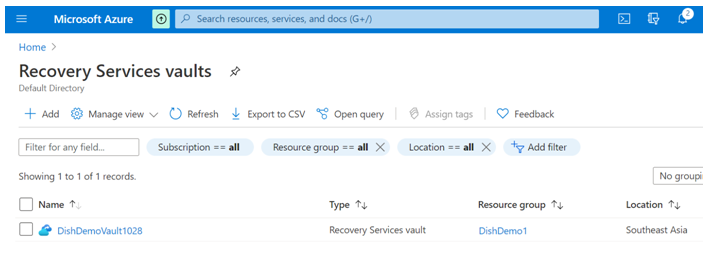
Configure Backup Retentiveness Settings
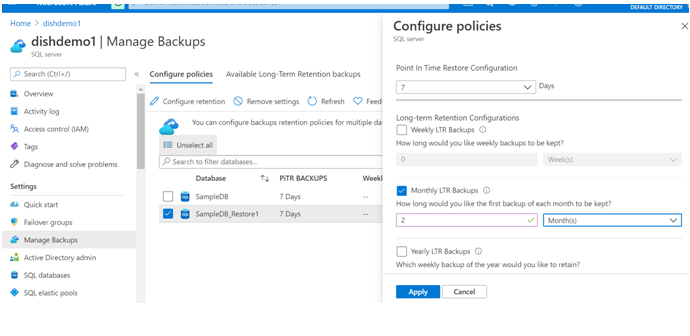
Action Log
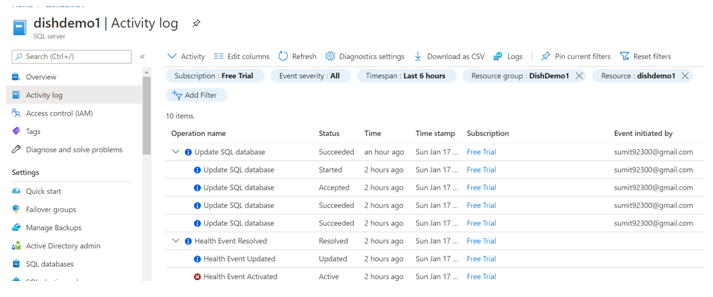
Restores for Azure SQL Database
Restore Deleted Database
Beneath screenshot currently available databases in our Azure SQL Instance, we will delete database SampleDB_Restore1 and recover it.
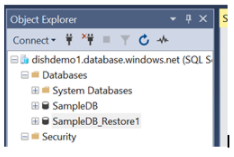
To restore a deleted database, in the Azure Portal become to the SQL Azure server where the deleted database was stored then click on the Deleted databases choice:
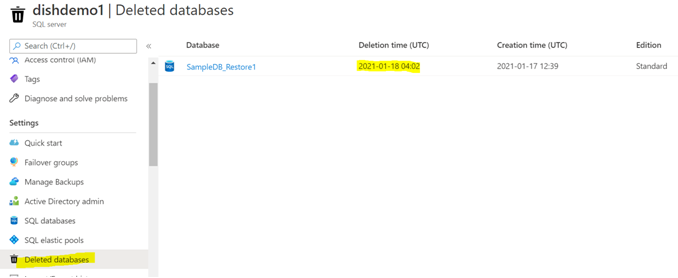
In the above screen you can see that I take a deleted database in this SQL Azure server. All the deleted databases volition be listed in the right pane.
If a database was deleted earlier than the last backup retention period you will non be able to restore it anymore. This mean, vii days for a Basic Edition and thirty days for other editions.
To recover a deleted database, only click on the corresponding row in the correct pane. This will present a like screen as the following:
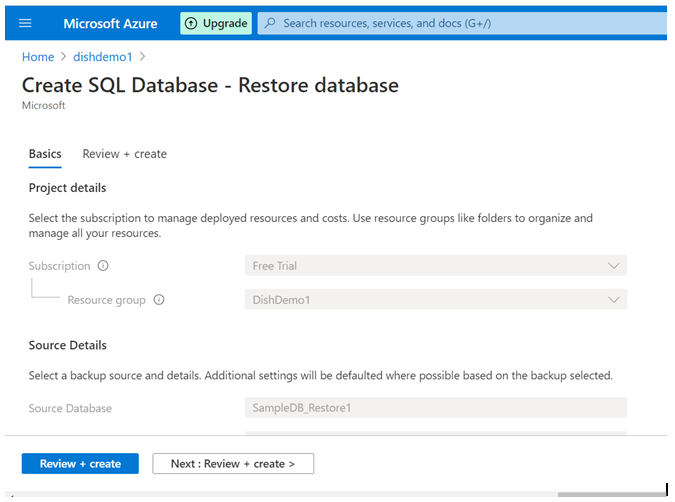
Once we click on Review and create it will initiate information technology will show and ostend all details regarding restore.
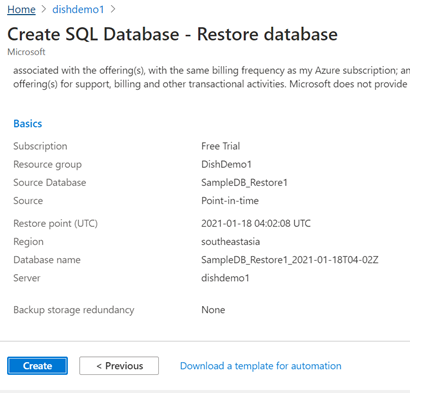
Subsequently confirming all details, we tin start restore functioning past clicking on Create and it will update like below once deployment is consummate.
Point in time restore
In SQL Azure, when restoring from automated backups, it is e'er a signal in time restore, meaning that you lot do not choose the fill-in file or files to be restored, but provide the exact restore point in time.
When restoring from an existing database, you must provide a restore signal in time.
The Restore option is the second detail in the context menu. Click on it to showtime the restore procedure.
Note that SQL Azure does not let you restore over an existing database, so you have ii options hither:
- Restore the database providing a new database name
- Rename the electric current database name so you can restore to a new database using the old database name.
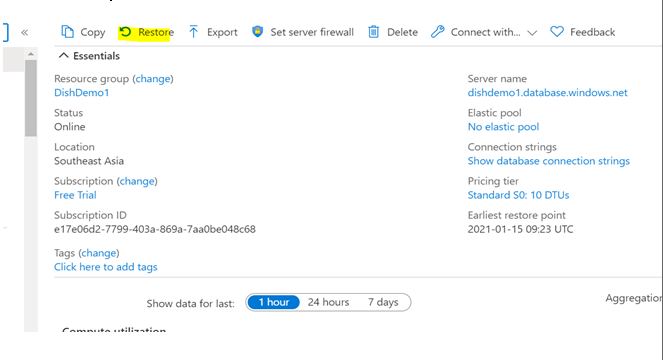
Later selecting restore nosotros can enter database name with which you want to restore.
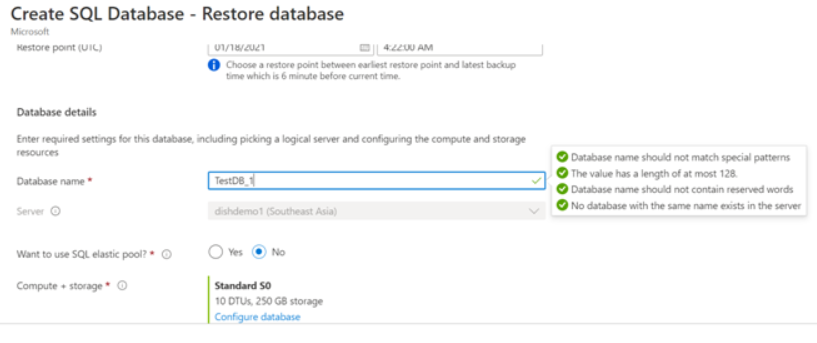
Once the restore is completed it will brandish bulletin as below.
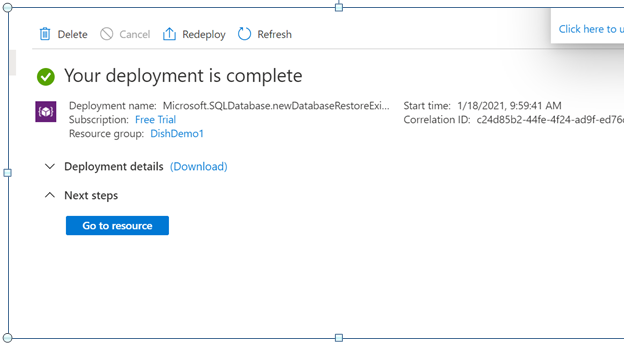
Below is the screenshot of Object explorer one time restore operation is deployed.
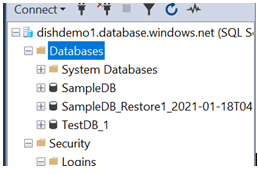
Migrating Database through BACPAC
A BACPAC file is a ZIP file with an extension of BACPAC containing the metadata and data from the database. A BACPAC file tin be stored in Azure Blob storage or in local storage in an on-premises location and later imported dorsum into Azure SQL Database, Azure SQL Managed Instance, or a SQL Server instance.
Creating BACPAC file for migrating :
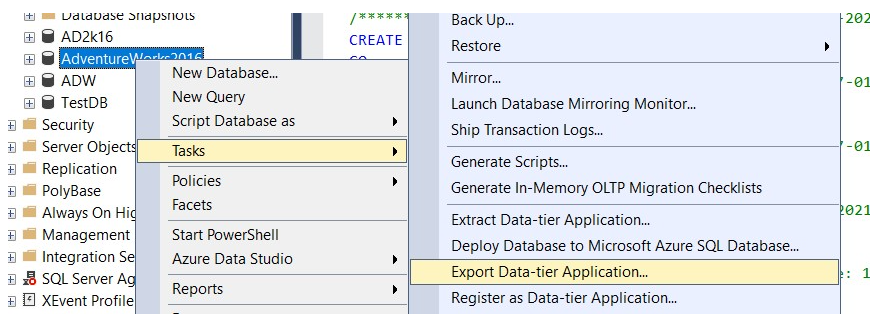
We tin create BACPAC file on local disk or on a Blob container in Azure Storage
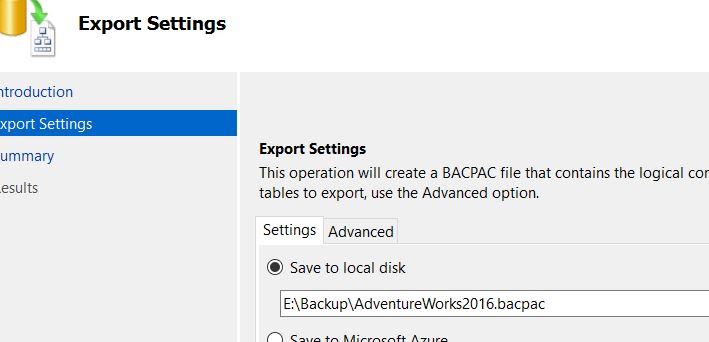
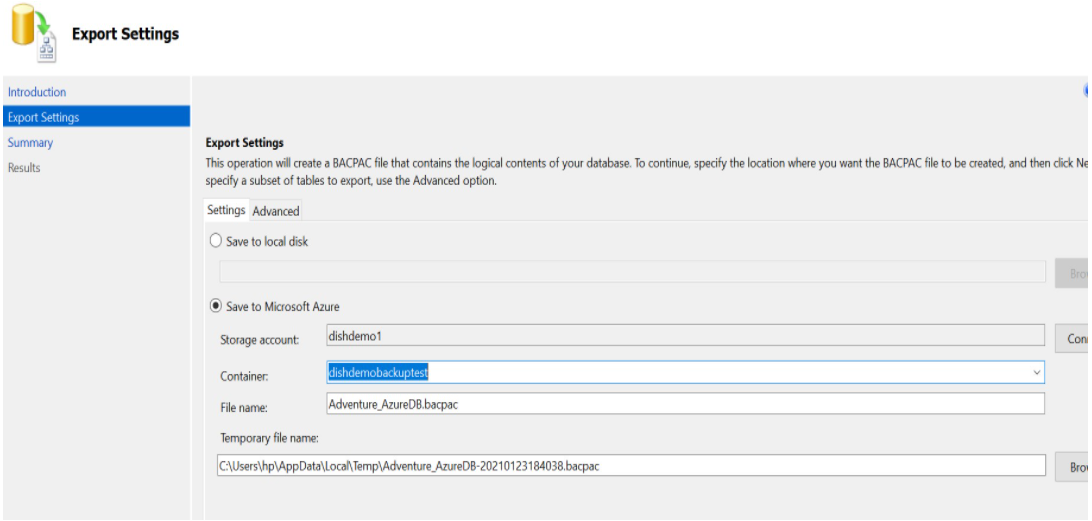
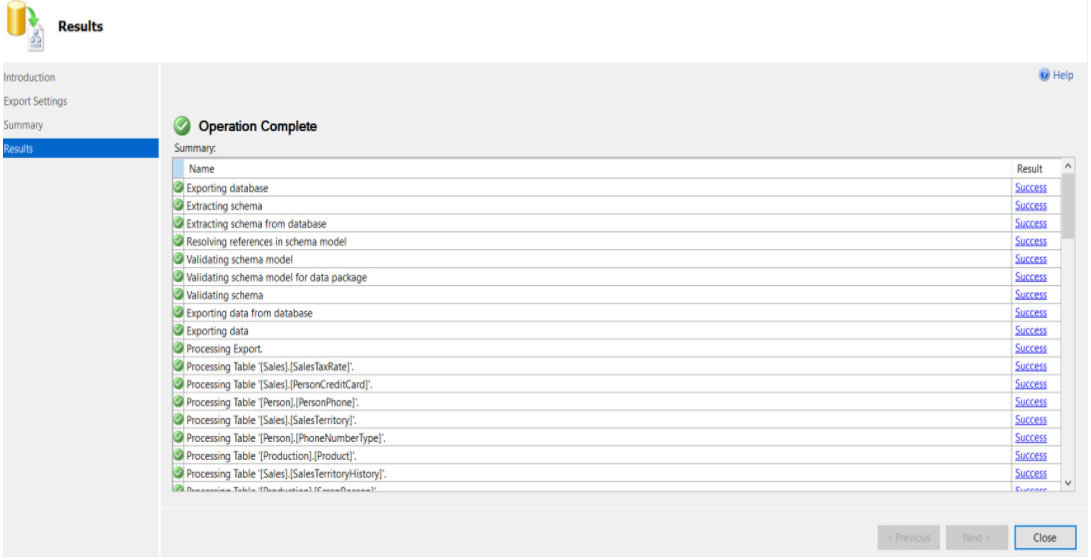
Deploying BACPAC file :
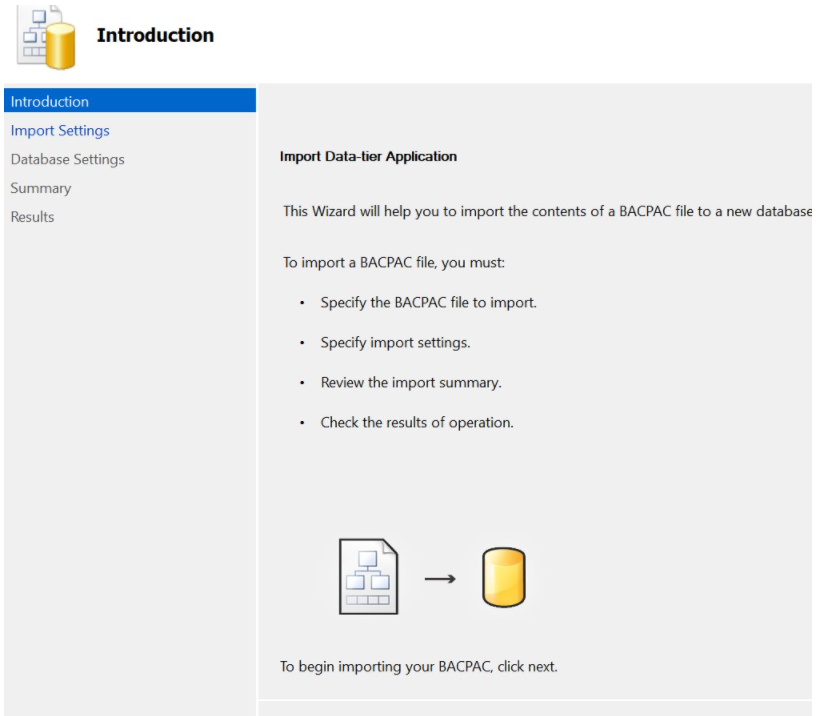
Nosotros tin utilise BACPAC file stored on local or from Azure storage,

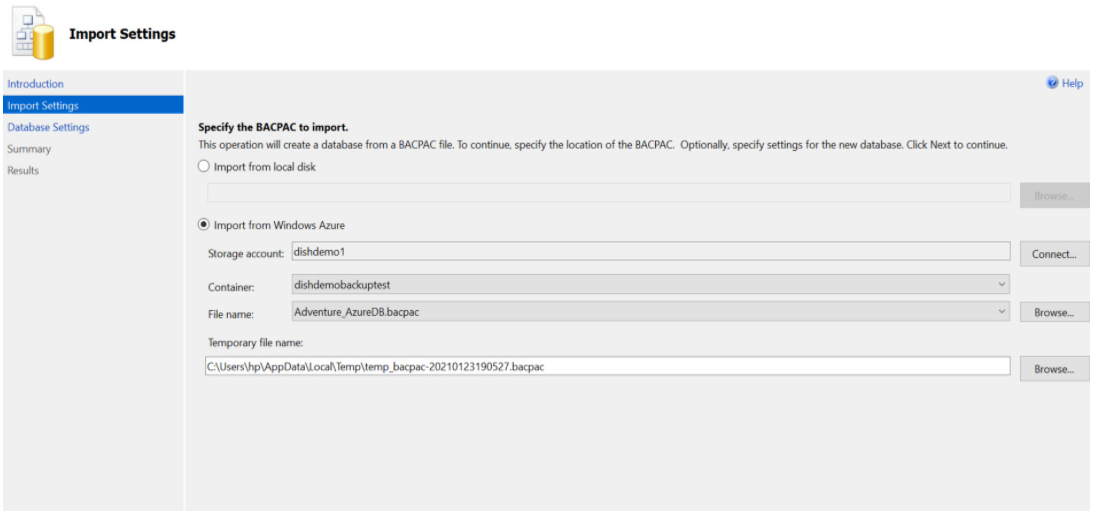
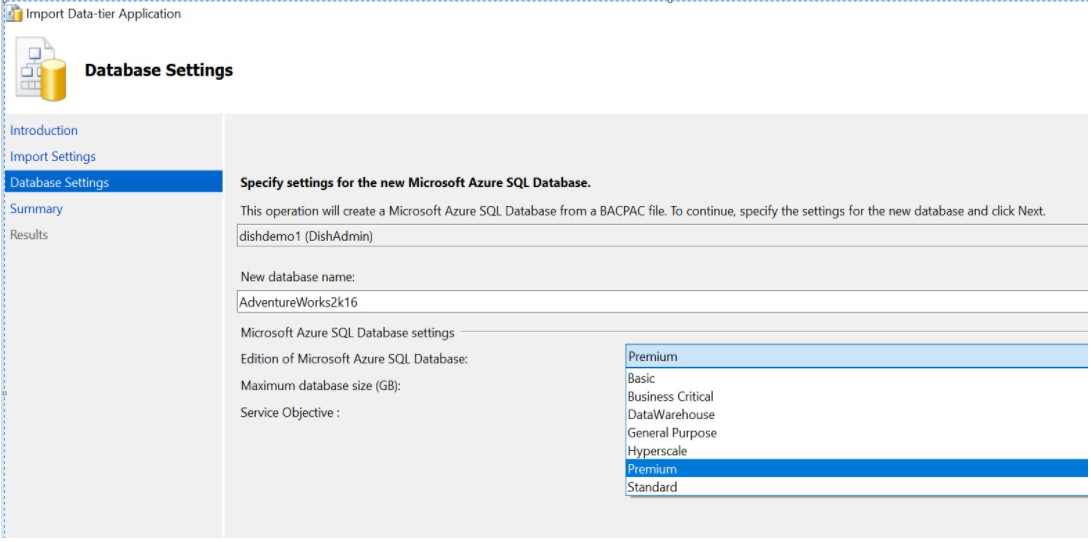
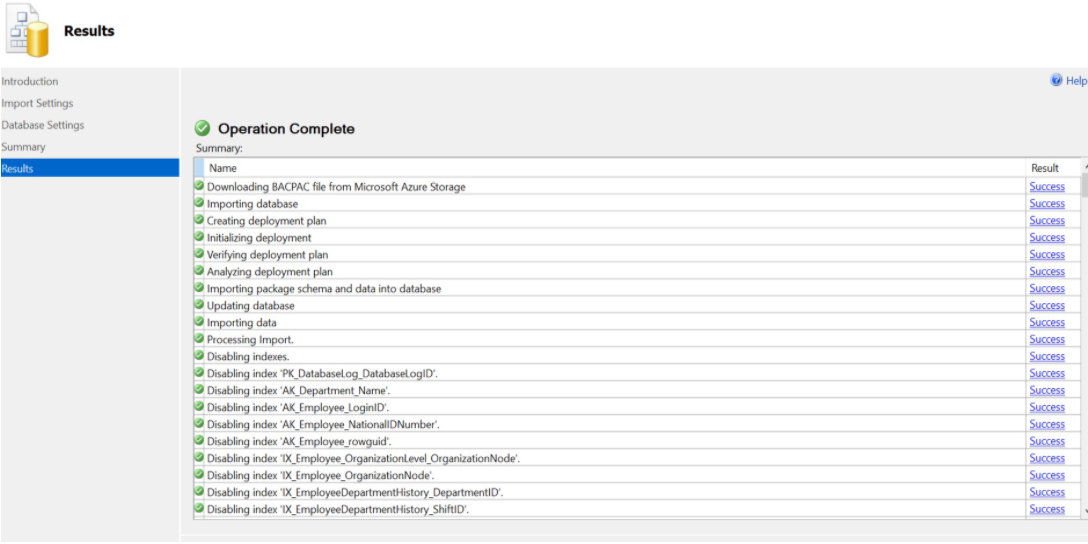
Using Azure Blob Container Storage :
We can also take backup to Hulk container in Azure storage.
Either we can have native backup and copy it to Blob container using azcopy application by executing below control
./azcopy.exe copy "D:\DishDemo\AD2k16_CopyOnly.bak" https://dishdemo1.hulk.core.windows.net/dishdemobackuptest/AD2k16_CopyOnly.bak?sv=2019-12-12&se=2021-02-22T08%3A03%3A15Z&sr=c&sp=rwl&sig=EsE4cQa3V8q13iUrgg85qMSINH%2FThFpoTGzVQ0vBFOQ%3D
Or by taking backup directly on the Hulk container.
For the later, nosotros have to follow below steps.
Prerequisites:
· Become an Azure Business relationship.
· Create an Azure storage account.
· Install SQL Server Management Studio.
· Install SQL Server 2016 or deploy Azure SQL Managed Instance with connectivity established through an Azure SQL virtual auto or point-to-site.
· Assign the user account to the function of db_backupoperator and grant change whatsoever credential permissions.
· Create Azure Blob container, following below steps,
1. Open the Azure portal.
2. Navigate to your Storage Account.
three. Select the storage account, scroll down to Hulk Services.
4. Select Blobs and then select + Container to add a new container.
5. Enter the name for the container and make note of the container proper noun you specified. This data is used in the URL (path to backup file) in the T-SQL statements afterward in this quickstart.
6. Select OK.
· Create credential in SQL using the below TSQL query.
CREATE CREDENTIAL [https://dishdemo1.blob.cadre.windows.cyberspace/dishdemobackuptest]
WITH IDENTITY = 'SHARED ACCESS SIGNATURE',
SECRET = 'sv=2019-12-12&ss=bfqt&srt=sco&sp=rwdlacupx&se=2022-01-26T14:15:27Z&st=2021-01-26T06:xv:27Z&spr=https,http&sig=fza8qVgTUN9zkWu4CV7ec0BXq3R0WgRZKedzd7o896U%3D';

· So we tin take backup directly to Blob container path, using beneath TSQL query.
BACKUP DATABASE [AD2k16]
TO URL = North'https://dishdemo1.hulk.cadre.windows.net/dishdemobackuptest/ad2k16_backup_2021_01_26_115257.bak'
WITH NOFORMAT, NOINIT, NAME = N'AD2k16-Full Database Backup', NOSKIP, NOREWIND, NOUNLOAD,STATS = 10
GO
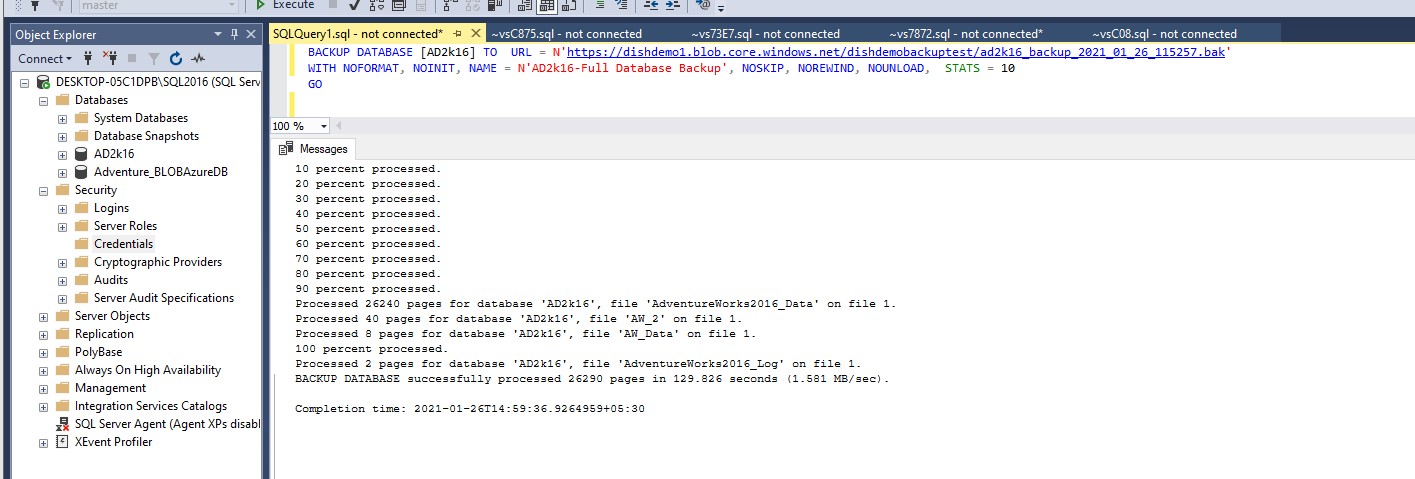
· Nosotros can use backup on Azure Blob storage to restore on whatever SQL instance using below TSQL query.
USE [principal]
RESTORE DATABASE [AD2k16_Restore]
FROM URL = N'https://dishdemo1.blob.core.windows.cyberspace/dishdemobackuptest/ad2k16_backup_2021_01_26_115257.bak'
WITH FILE = one,
MOVE North'AdventureWorks2016_Data' TO N'C:\Program Files\Microsoft SQL Server\MSSQL13.SQL2016\MSSQL\Information\Adv2k16_Data.mdf',
MOVE N'AW_2' TO Northward'C:\Program Files\Microsoft SQL Server\MSSQL13.SQL2016\MSSQL\Data\ADW_2k16.ndf',
Motility N'AW_Data' TO N'C:\Program Files\Microsoft SQL Server\MSSQL13.SQL2016\MSSQL\Data\ADW_Data_2k16.mdf',
Motion N'AdventureWorks2016_Log' TO N'C:\Plan Files\Microsoft SQL Server\MSSQL13.SQL2016\MSSQL\Information\Ad2k16_Log.ldf',
NOUNLOAD, STATS = 5
GO
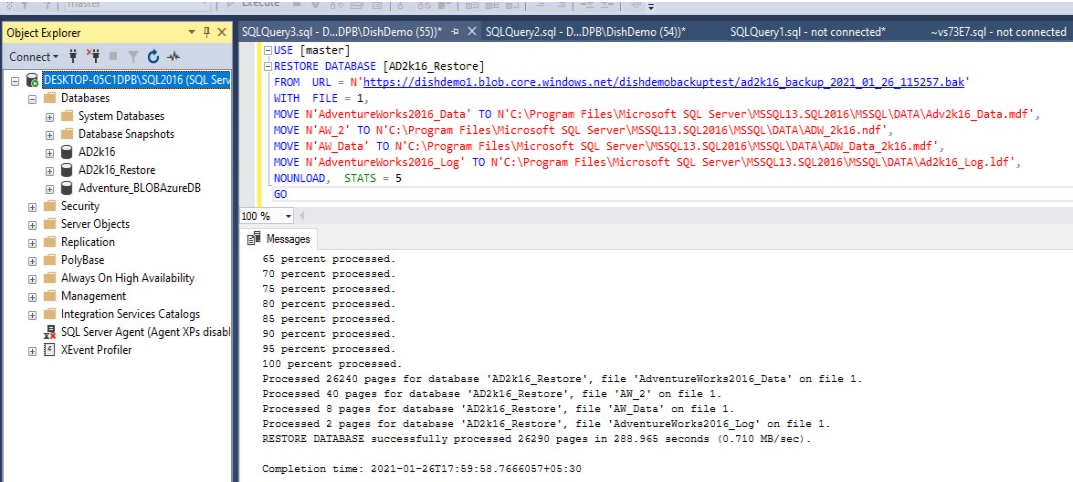
"Sql Server' Extract Logins From Restored Master Database
DOWNLOAD HERE
Source: https://www.sqltreeo.com/docs/azure-sql-database-backup-and-restore
Posted by: 3news2onlinea.blogspot.com
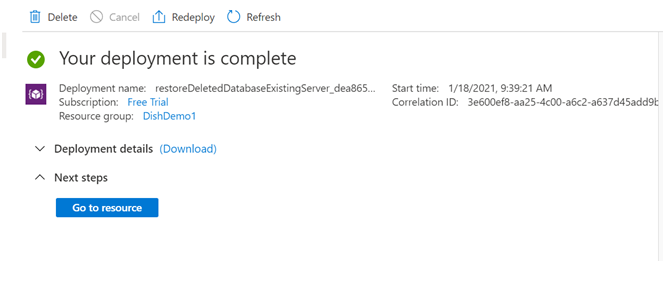
comment 0 comments
more_vert